
Norway
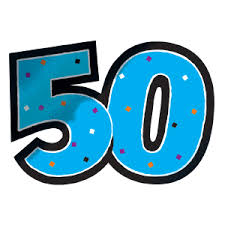
Trackchasing Country #50
Greetings from places on the way to and from Lier, Norway. Click on the links above to read about the advanced prep, touring and racing segments from this trip to a Nordic country in northern Europe…Norway, home to my trackchasing country #50.
PRE-TRIP – “CAN THIS BE COUNTRY #50 SO SOON?” TRACKCHASING TOUR
Greetings from the United States
Editor’s note: Everything written in the “Advance Preparation” section of this Trackchaser Report was reported before I ever got to Norway. In order for a trip like this to be successful a good deal of advance preparation must be done. That planning takes place at the world headquarters of RLR – Randy Lewis Racing in San Clemente, California.
Trackchasing in Norway will increase my lead in the all-important most countries seen category to 50-46 over Belgium trackchaser Roland Vanden Eynde. That means he must see FIVE more countries in order to take the lead. Recall that various worldwide “bylaws and treaties” call for the trackchaser who first reaches a number to be the winner of all ties.
TODAY’S HEADLINES
Frank Markussen is my nomination for “Man of the Year” in Norway…………..details in “Advance preparation”.
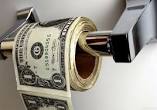
Where does the money come from?…………more in “Currency”.
Have you tried “Sleepinginairports.com”? …………..details in “Overnight Accommodations”.
ADVANCE PREPARATION
Why Norway?
The simple answer would be “why not”. I started planning for a trackchasing trip to Norway many months ago. I wanted to see some ice racing here as I did in Finland last year. Alas, I couldn’t find any Norwegian ice racing. Therefore, I began planning for a springtime trip to Norway.

This takes some time to figure out.
Typically there is a good deal of “Advance Preparation” that goes into one of these trips. Several “items” need to be checked off. The first and most important item for getting the trip started was to confirm there would be a race. Once that’s done there’s the transportation, hotel, rental car, and …….of course, the “companion selection” process. There are lots of other things that need to be covered too. When this was finished it would be time to “get out of the house and head on down the road.”
Editor’s note: You might wonder why I take the time to provide so many details about the logistical and economic parts of the trip. It’s simple. I hope that when people read one of my reports they can see themselves making an adventure like this. I’ll explain how I organize things as well as what it takes money-wise to make it happen. Then maybe that “spark” will come to a reader…..and before they know it they will be touching down in a Morocco or a Colombia or a New Zealand or somewhere far from their home…..and somewhere far from their comfort zone.
I guess I’ve learned my way around the world by now.
Coming into this trip, I had trackchased in 49 countries. I am leading Belgium’s Roland Vanden Eynde by four countries after the addition of Norway. It was Roland himself who first encouraged me to expand my trackchasing adventures beyond the United States. Back in 2005, Roland invited Carol and me to come trackchasing with him in Europe. During that trip, I added countries 5-8, including the Netherlands, Belgium, France and Germany.
I remember Roland telling me it wouldn’t be so difficult to go all over the world seeing racing in different countries. At the time “I couldn’t see the forest for the trees on that one”. I didn’t think there was any way I could add many new trackchasing countries to my single-digit list. I have Roland to thank for getting me started on this wild, fun and intriguing international journey.
I often found it is the individual himself who is responsible for his/her individual achievement limits. I’ve seen many people blame “the other guy” for their lack of results. I always smile silently to myself on that one. In reality, it is the individual himself who “limits” what can or can’t be done simply by the “attitude they bring to each party”.
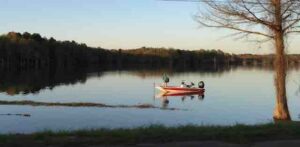
Fishing…the most important part of any foreign trip
I used to go fishing with my grandparents often when I was a kid. I remember asking my grandfather if we were going to catch anything on one of our fishing trips. “I don’t know,” he told me. “That’s why they call it fishing!” I don’t fish much anymore.
However, I do go “fishing” when it’s time to plan a foreign trackchasing trip. Just as I did as a child fishing for catfish on the Illinois River, with foreign country trackchasing, I “cast my line” and see what I come up with.
In today’s world of technology, my fishing does not involve a rod and reel. It involves email! I guess my “fishing” is really called “phishing”. I send out a rash of emails to any foreign contacts that I think might be able to give me information about the racing where I plan to travel.
I’ve gotten to be pretty good at this. Without the help of “boots on the ground” my international trackchasing would be far less successful. I have come to count on the good of my fellow man. Of course, women have been just as helpful.
One more thing about fishing. I get a special reward that most fishermen don’t get when they go fishing. Oftentimes I get to make lifelong friends with the fish I “catch”!
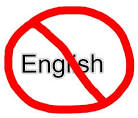
The language barrier can be daunting.
My first four trackchasing countries (United States, Canada, United Kingdom, Australia) were all English speaking. After that, with the foreign language issue, international trackchasing became more difficult. I don’t speak or write ANY foreign languages. However, English is a nearly universal language. I count on making contact with people who live in a foreign country but speak English.
I have been very fortunate in meeting up with people who want to help me. They will often send email after email answering my every question. We usually have a time zone difference of eight hours or more. I send an email at night. By the time I come into my office in the morning my new international friends have helped me in one way of the other.
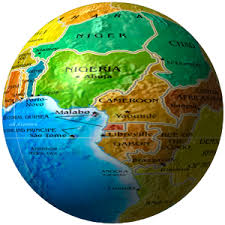
A little help from my friends.
As I look back on it I’ve had major help from friends and/or contacts in Argentina, Australia, Austria, Barbados, Belgium, Brazil, Bulgaria, Canada, Colombia, Costa Rica, Denmark, El Salvador, Finland, Guatemala, Guyana, Iceland, Italy, Jamaica, Malta, Mexico, New Zealand, Philippines, Portugal, Qatar, Romania, South Africa, South Korea, Sweden, Switzerland and the United Kingdom. I hope I didn’t leave anybody out!
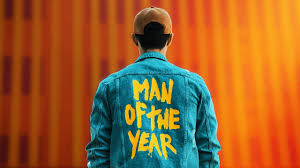
Norway’s ‘Man of the Year’?
My primary contact, after sending out many many emails on this trip was Frank Markussen. I did receive some feedback from several Norwegian contacts. However, I was sensing the language barrier was limiting my responses.
Frank hung in with me all the way. Despite his living more than 1,000 miles from where I would end up trackchasing in Norway, he did lots of “leg work” on my behalf. He found race dates, made track contacts and even sent me the longitude/latitude coordinates for the track I would be visiting. I am indebted to Frank Markussen.
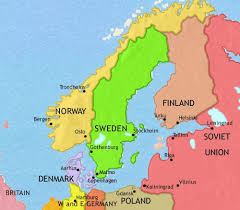
One more Scandinavian country added.
This trip should knock out all of the Scandinavian countries for trackchasing purposes that offer racing. Previously, I had trackchased in these countries.
Denmark
Finland
Iceland
Sweden
THE RACE
There must be a race.
Sometimes I worry about whether I will travel such a long way and the race won’t come off. Knock on wood that has never happened in a new country foreign visit. As far as I could tell there was no ice racing to be seen in Norway this past winter.
However, the “rallycross” and “bilcross” season starts in April in Norway. I had several tracks to choose from. I went with the venue that was closest to my “Norwegian home city”, Oslo.
Why Norway in April?
By the way, I chose to come to Norway in April because of the chance to save frequent flyer miles. A one-way ticket to Europe from the U.S.A. from October 15 through May 15 “costs” only 20,000 miles with American Airlines. During the more popular summer months, that same ticket goes for 40,000 miles. Even though I am lucky enough to have some resources I don’t like to waste things. Coming to Norway in April leaves the more “trackchasing lucrative” summer months available for U.S.A. trackchasing.
THE VISA

Just your passport, please.
That’s right. All I needed to do was show up with a valid U.S. passport and getting into Norway would be easy. No visa required. I am down to just 6-7 open pages in my passport. That’s AFTER I added 24 pages to the original forty-eight. I’ll have to figure out when I can afford to give up my passport for 2-3 weeks so I can add even more pages.
THE TRANSPORTATION
Orange County to Chicago to London to Oslo. This seemed like an easy enough plan to follow.
To begin the trip to Norway from SoCal Carol and I would have a four-hour layover in Chicago. Then we would have a WEEK’S layover in the United Kingdom. Tying our U.K. trip into Norway the following week made lots of logistical sense.

I am getting support from American Airlines on this trip. They are NOT one of my normal trackchasing sponsors. However, during my business career AA was my airline of choice. American Airlines started the first-ever frequent flyer program back in 1981. Before I retired I earned more than SIX MILLION American Airlines frequent flyer miles.
Can you imagine how much flying and finagling it took to earn SIX MILLION American Airlines frequent flyer miles? The skycaps knew me by name. Right after I retired American decided to make me a LIFETIME platinum member of their AAdvantage program. Being “platinum” comes with many worthwhile perks. And so it is, American Airlines will take me much of the way toward trackchasing country #50.
My first ever trip on SAS Airlines.
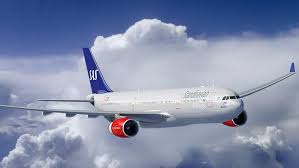
American Airlines will get me to London. SAS Airlines will transport me the last little bit of this trip. Some European airfares are incredibly cheap. Would you believe that one day’s rental car expense in Oslo is GREATER than an airline fare from London to Oslo or the flight I took from Oslo back to Amsterdam? From Amsterdam, I would end up using one of my trackchasing airline sponsors to complete the trip.
TIME ZONES
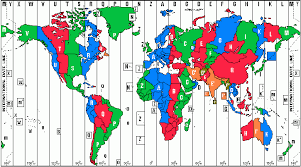
What time is it?
Norway is nine hours ahead of Los Angeles, which is in the Pacific time zone. After a week in the United Kingdom, I was perfectly accustomed to the Norwegian time zone. By the way, Norway is in the “Central European Summer Time” time zone this time of year. However, I suspected I would play “heck” getting back to normal when I have to return home!
CURRENCY

Norwegian Krone banknotes and coins (NOK), the currency of Norway
We don’t need your stinkin’ Euros.
Norway is part of Europe but they don’t use the Euro. Norway is not even part of the European Union. What do they need those guys for? The official currency of Norway is the Kroner. The wholesale rate of exchange is about 5.25 Kroner to the dollar. I prefer to use credit cards during this trip. That saves my foreign currency cash.
I don’t know how she does it, she just does it.
By the way, I consider Carol a “full-service” wife. She does it all. One of those things is getting my foreign currency. I simply “put in an order” and in a day or two little cellophane bags begin appearing on my desk.
I don’t know where she goes to get the money. Frankly, I don’t care. For this trip, she delivered British pounds, Euros and Norwegian kroner. For a guy that never carries more than $100 cash that seemed like a lot of money. I will be able to supplement that with U.S. dollars and a wad of credit cards.
WEATHER
I don’t care if it rains.
It’s still cool in Norway. Spring comes late here. I am not very concerned about the races being rained out. For the most part, European racing does not cancel in bad weather. I have yet to be rained out in all of 2011.
According to my iPhone weather app race day weather calls for a high of 64 degrees Fahrenheit and a low of 42 under partly sunny skies. There’s only a 10% chance of rain. This sounds like San Clemente weather.
OVERNIGHT ACCOMMODATIONS
Since “She” is not on this trip the options are wide open.
“Trackchasing’s First Mother” is not coming along on this trip. Because of her responsibilities at home, she could only “spare” a week or so away. She spent that time with me in the U.K.
That means in Norway, I can sleep on the floor of the airport or in my car if I have too. Norway is a very expensive country for tourists. The average hotel room price I found while researching this trip came in at around $200 U.S.!

I stayed in London to save money.
I will be overnight in Norway for four nights. I actually stayed in London for two nights extra after Carol left to avoid the expense of Norway. London is about as expensive as New York City. Can you imagine staying in London to SAVE money?
Sidestep.com (now Kayak) rocks!
I found a semi-reasonably priced hotel for my first two nights in Oslo. I used www.sidestep.com (now Kayak) for my hotel price shopping. I planned for another overnight somewhere in the Norwegian countryside.
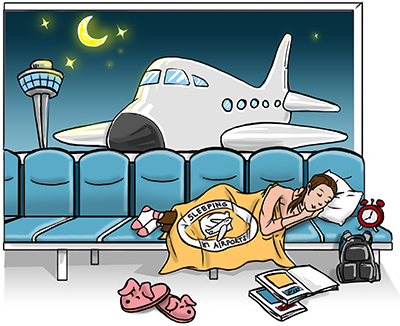
Remember, I’m a retired pensioner living on a small fixed income (or something like that).
My final night of “accommodation” would be at the Oslo airport. I frequently consult www.sleepinginairports.com. This is an outstanding website. Folks “rate” airports on how “friendly” they are to travelers trying to save a kroner or two by sleeping in the airport.
I didn’t plan to return to the airport until 10 p.m. or so on Sunday night. My first flight taking me towards home was scheduled to leave at 8:30 a.m. Monday morning. Had I chosen an expensive Norwegian hotel I would not have been able to use it for very long.
THE RENTAL CAR
Are you kidding me?
Our rental car expense from London averaged about thirty dollars per day. That’s about what I pay in the U.S. However, a car in Norway, even the smallest available, costs around $125 U.S. per day. Are you kidding me? I consider myself the “king of renting cars” (everyone should be the king of something right?). There was no way I could find to get a car for much less than $125 per day.
I would be in Norway for four days. However, I would rent a car for only two days. Because of the exorbitant rental car expenses, I chose to use public transportation for the first two days of my trip. We don’t have any (much?) public transportation in SoCal. To me, public transportation is a novelty. Riding a bus is sort of like a trip to the zoo.
NAVIGATION
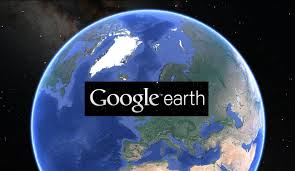
I had already ‘seen’ the racetrack before I arrived.
Because of the support I received from my Norwegian contact, Frank Markussen I was able to plot the location of my Norwegian racetrack on Google Earth. Before I rent my car I will find out if my friendly U.S. based GPS buddy, Garth, wants to work in Norway. If not, I will try to rent a GPS unit at the rental car location. If all of that fails I do have a Road Atlas type Norwegian map. If I have to go that route (which I hope I don’t) I will probably end up having to stop and ask for directions. It’s all part of the fun.
THE TRAVELING COMPANION
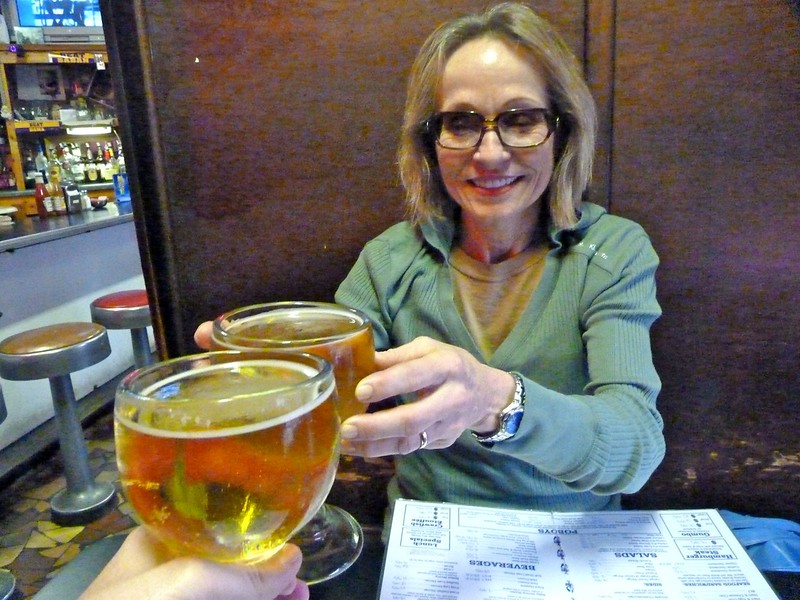
We travel a lot.
As mentioned Carol headed for home from the U.K. following a week’s stay there. She already has 29 overnight stays this year and it’s only May 1st. I have 59 overnights during the same period. It’s getting harder and harder to justify a house at the beach in San Clemente.
THE SUMMARY
Can’t they just make more new countries?
Last year I went trackchasing in 17 different countries. I visited fourteen of those for the very first time. I only have about twenty more “new countries” on my radar screen. I will never see fourteen new countries in a single year again. I would be happy with 3-5 each year until most of the new countries where I could trackchase melt away.
To be continued………………….
Thanks for reading about my trackchasing,
Randy Lewis
World’s #1 Trackchaser
Life should NOT be a journey to your grave with the intention of arriving with a well-chiseled and honed body but rather to crash in, riding your golf cart up the 18th fairway with a glass of single malt in one hand and a brownie in the other. You should be totally worn out and used up with a tattoo on your chest proclaiming, “What a ride”.
NORWAY – “CAN THIS BE COUNTRY #50 SO SOON?” TRACKCHASING TOUR
Greetings from Oslo, Norway.
TODAY’S HEADLINES

How much should a beer and pizza cost? …………..details in “Day 10 – Thursday”.
What is Oslo’s City Hall famous for?……………more in “Day 11 – Friday”.
Let’s learn about Norway…………..details in “Norway – Fast Facts”.
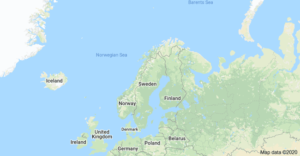
LIKE TO KNOW MORE ABOUT NORWAY?
If you’d like to learn a little more about Norway the country check out the “background” information I prepared for you. It appears at the bottom of this report. I have condensed this section so you can get a good “feel” for this European continent location. Most of the material comes from Wikipedia.
THE OBJECTIVE, THE TRIP, THE PEOPLE…AND A WHOLE LOT MORE
The objective.
The trip is about touring.
I am really the only trackchaser that puts a main focus on “local touring” while I chase tracks all over the world. That’s too bad. For me, oftentimes what I see and do away from the racetrack is much more entertaining and memorable than what happens at the track.
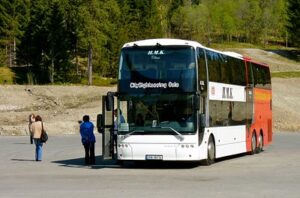
With that in mind, I scheduled most of my time in Norway for touring. My objective was to see as much of Norway as I could in the very limited time (four days) I had. Of course, I try to stop and photograph as much of the trip as I can.
I do that somewhat selfishly. Some day when I can no longer “hit the road” I might be able to sit back and experience my trips all over again via pictures and videos. Of course, there is another reason I take pictures. I want to share them with you!
The strategy.
Listen to the locals, then decide from there.
The strategy was to ask the locals for advice. I used TripAdvisor.com a bit for touring advice. Then when I got into Oslo, the first place I stopped (after dinner) was the local tourist office.
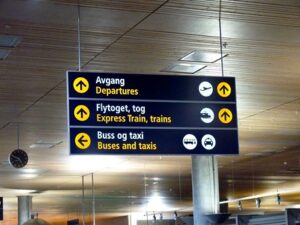
They could not have been nicer. Soon I was loaded down with brochures, maps and a plan. One of my strategic choices is to always ask for the advice of others. Then I can accumulate that advice and make the executive decision regarding the next steps.
The Trip
I was on my own now.
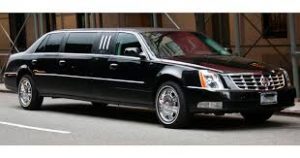
Just two days ago, I put Carol into a big black Mercedes limo and sent her off to the good ol’ U.S.A. Then I went off to London to tour. However, today I left London headed for Oslo, Norway. Norway is expected to be the site of my 50th trackchasing country.
While Carol took a limo to the Heathrow airport, I walked then caught a free bus to the air terminal today. Carol is not extravagant. I just like to treat her extravagantly!
I’m off to Oslo.
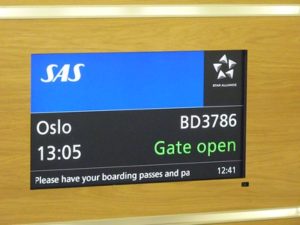
I am flying on SAS – Scandinavian Airlines to Oslo. Many airlines today like to scare the living daylights out of you with their extra fees. I really hate checked baggage fees. I have never paid one….yet.
Carol had headed home with my dirty laundry from our eight days in the U.K. She had a “soft” bag that must have been five feet long. It had everything in it that I didn’t think I could get into one bag for today’s SAS flight to Oslo.
Seven days; one bag.
I was stretching it trying to spend the last seven days of my trip with just one bag. After I got to Heathrow I sat down in a corner and “organized”. Several t-shirts went in the sleeves of my golf windbreaker aka as a “jumper” here in the U.K. Then I tied another long-sleeved shirt around my waste. Finally, I slung my camera bag and Bose headset and case over my shoulder. I was hoping they wouldn’t notice these two small “bags”.
I tried to check-in using an electronic kiosk to avoid further scrutiny. However, the machine wouldn’t read my passport. Nevertheless, I simply answered “No” when an agent asked if I had any bags to check to Oslo.

The London Heathrow airport has seen better days. There is a good deal of shopping available. As you can see….friendly people too. However, I had no place to put anything so I couldn’t buy anything. I couldn’t find a single thing in the airport that looked like it was worth eating so I headed off for my 1:05 p.m. departure to Norway.
The plane ride was uneventful. I had plenty of legroom in coach. SAS did not serve ANYTHING in coach for free. Welcome to the 21st century!
Consumers are thrifty (cheap).
I understand the situation. The consumer doesn’t want to pay for much. Airlines have discovered that their customers want low fares first. The companies have discovered they can charge for “extras”. Extras often include something as simple as buying a ticket with a credit card and extends to seat choice, checked baggage as well as food and drink. A few consumers pay for these extras but not many. This makes the flight attendants’ job much easier! My airfare from London to Oslo (a two-hour flight) came in at about $100 U.S. I couldn’t beat that. I didn’t have to pay for any extras either.
We landed at a bit past 4 p.m. Oslo is one hour ahead of London and nine hours ahead of SoCal. I have fully converted to the new time zone. It will be interesting to see how long it takes me to “readjust” after I return home.
Clearing customs was fast. The customs agent didn’t ask me a single question. I knew in advance that Norway was going to be expensive. Commercial airline pilot and son J.J. travels the world as much or more than I do. He told me that Norway was the most expensive country he had ever visited. Now I was about ready to experience that reality.
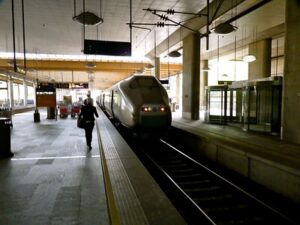
How expensive would Norway be?
The first step would be to get a ticket for the Airport Express train. The train would take me from the airport to the central train station in Oslo. At first, I thought I would take the easy way out. Instead of struggling with the automated ticket machine and the language barrier it would create, I tried to buy my ticket from a real person. Of course, that privilege costs an extra $6 U.S.!

I would struggle with the machine! It’s amazing what one can do when the motivation is there. I quickly used the “English” option and my Visa credit card to get my ticket. The charge was 170 Norwegian Kroner. For the twenty-minute train ride that would be about $31.60 U.S. Today one U.S. dollar buys about 5.37 kroner. Luckily, Carol left me well stocked with Norwegian currency.
The train was modern, quiet and quick. Soon I was in the “central train station”. It was now late afternoon. I had not eaten since breakfast time. The train station had both a Burger King and a McDonalds. I was hungry. However, I did not come all the way to Norway to eat American fast food. I did notice the biggest burger offered at BK along with fries and a drink went for 97 kroner (about $18 U.S.!).
It was warm outside relatively speaking, probably in the high 60s. There was still plenty of daylight. The sun doesn’t set until past 9 p.m. I soon found a popular outdoor café. I would eat there.
Let’s eat…..if I can afford it.
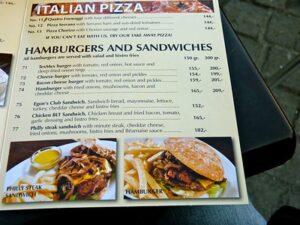
To say their menu was pricy would be an understatement. A large cheeseburger with a small salad and fries went for $40 U.S. The filet mignon sold for just under $60 U.S. Note: this was no Ruth’s Chris steakhouse.
The serving policy was unusual. You secure a table first. Then you note the number on your table. The next step is to go into the bar and place your order. You order, tell them what table to bring your food too and then pay. It didn’t take long for me to understand the drill.

I settled on a large draft beer (Ringnes – Norway’s most popular beer) and an Italian (not American) pizza. Any guesses on the price? Forty-Four bucks U.S.! That’s probably more than twice what it would cost at home. You can bet that I ate every last crumb.
What to do……… from people who should know.
From there I stopped in a local tourist office. I have just one full day for Oslo touring (tomorrow). Right now I’m planning to take a five-hour bus tour that hits all the recommended spots. Who knows when I will be back in Oslo? I might as well bite the bullet and see as much as I can in a day.
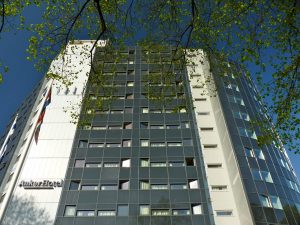
From there it was a ½-mile walk to the Anker Hotel where I would be staying. The hotel is convenient to most places, fairly cheap (about $120 U.S.) by Norwegian standards and comes with a buffet breakfast. I won’t be leaving that buffet hungry!
The woman at the hotel’s front desk was pleasant and helpful. She explained to me some of my tourist options. She also told me about the local area. The hotel is in a little bit of a rundown area, just across a small river from a large neighborhood of pubs, boutiques and cafes. Nevertheless, it’s a very nice situation for the two nights I will be here. Everything in the city of Oslo is within walking distance.
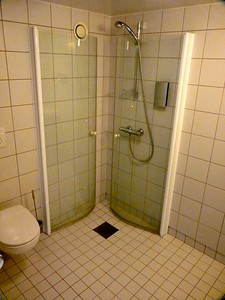
She also explained that I had been “upgraded” to a larger room. That was pleasant news. My seventh-floor room was good sized especially since there wasn’t much furniture. The view was beautiful over a wooded/city landscape. The floors are hardwood. The bathroom shower runs directly onto the bathroom floor. That will be interesting. I haven’t seen that setup since my last visit to Bangkok. Overall, I am very pleased with my first few hours in Oslo. With BBC pre-coverage of the Royal Wedding, I decided to stay in for the evening and get ready for my big touring day of Oslo tomorrow.
TripAdvisor rocks!
By the way, I learned of the hotel from TripAdvisor.com. If you’re traveling and need some good advice from travelers just like yourself I highly recommend TripAdvisor.
Friday
I wouldn’t go hungry.
Today has been set aside for a full day of touring in Oslo. The weather is absolutely perfect. Temps in the lows 70s with sunny blue skies. Next week’s forecast calls for highs in the 50s with rain. I definitely lucked out with the weather.
Breakfast is included in my room rate at the Anker Hotel. That’s good since prices for everything are SKY HIGH! My strategy was to eat as much as I could so I wouldn’t have to buy lunch.
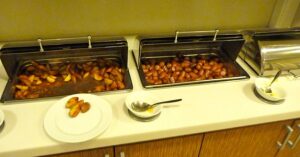
Overall, the food was plentiful at breakfast if not the tastiest. I started with OJ and hot dog/sausages, powdered scrambled eggs and fried potatoes. The baked multi-grain bread was the best bread I’ve had on the trip. They also had cold cereals, a few fruits and hard-boiled eggs. I wouldn’t go hungry in Oslo.
Today was my ‘Oslo’ day.
I wanted to see as much of Oslo as I could today. Tomorrow, Saturday, I go to the racetrack. Sunday I will travel to the Norwegian countryside then head for home on Monday. Today was my day to see Oslo.
TRACKCHASING TOURIST ATTRACTION
Oslo Grand Highlights Tour
The folks at the hotel recommended taking a tour with H.M.K. Oslo Sightseeing (Learn more about HMK). I selected the “Oslo Grand Highlights Tour”. At five hours, this was the longest tour they offered. The cost was a reasonable (for Norway) 360 NOK or about $68 U.S.
The tour would leave from near the Oslo city hall. Did you know that the Nobel Peace Prize is given out at the city hall each December? Yep, you can learn something new every day if you want too. The tour’s starting point was a 20-25 minute walk from my hotel. It was a gorgeous morning in Oslo. Walking is the best way to see just about any city.
Our double-decker bus was modern. Our tour guide spoke several different languages. Her English version was excellent. During the tour she pointed out several different facts including these:
Norway’s main religion is Lutheran
The unemployment rate is only 2.8%
Norway has not been affected by the credit crisis
Norway is a rich country with exports of oil, gas and aluminum
Oslo’s population is about 600,000
Some 70% of the city is in forest
Norway’s legislature includes 169 representatives from seven parties
With those facts in mind, she asked us to fasten our seat belts (a first for me on a bus) and off we went. The tour’s highlights included:
- A complete tour of the city streets of Oslo
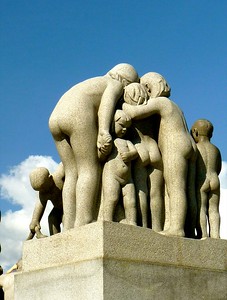
- Vigeland Sculpture Park (Learn more about the sculpture park)
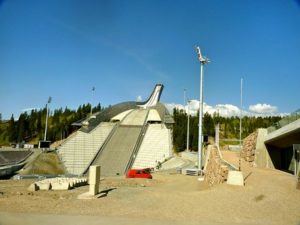
- Holmenkollen (Host to FIS Nordic Ski Championships 2011)
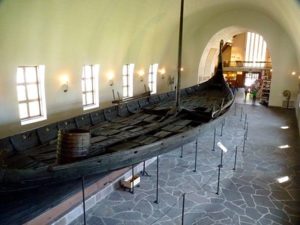
- Viking Ship Museum (Viking ships from centuries ago)
- Norwegian Maritime Museum (Norwegian Maritime Museum)

- Oslo Opera House (Oslo Opera House opened in 2008)
This was a fantastic way to see Oslo.
I could not have asked for a better day and way to see Oslo. I would love to come back in the winter and see the ski jumping at Holmenkollen, their gigantic ski jump facility. The sculpture park was most unusual. A five-screen film was the highlight at the Maritime Museum. It was amazing to see the small boats the Vikings used nearly 1,000 years ago to cross the seas. The Oslo Opera House was beautiful. I checked into seeing a performance but with ticket prices starting at $100 U.S. I declined the opportunity to see the ballet and the opera.
It never hurts to ask.
I had noticed my rental car company National dba Eurocar was near the city hall. Our tour finished at the opera house. It was a 25-minute walk back to city hall from there. However, I had a feeling I might be able to do better with my rental car prices.
In the U.S. I probably average about $30 per day to rent a car. Sometimes I can get them for as little as twenty dollars per day. Just this week we averaged about $35 per day for our car in London. What would a rental car cost in Norway? A lot!
In advance of the trip, I searched and searched and the best I could do was $255 for my two-day rental. Folks, that is more than $125 per day. To add insult to injury the price of gas in Norway is just about $10 per gallon U.S.
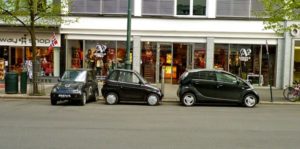
I figured it was worth the time to walk back to where Eurocar was located. Maybe they had a special “walk-up” rate. It wouldn’t hurt to try. As I entered the office I felt there was no need to explain that I already had a reservation. I asked what the rate would be as if I were a new customer. In point of fact, I really was a new customer. My current reservation called for a mid-sized car. The price I was trying to get now was for the cheapest car (probably the smallest) they had.
At first, the rental car agent came up with a rate of $206 for my two-day rental. That was better than my $255 currently locked-in rate. However, I have been trained in the “art of the deal”. I learned a long time ago that it is almost always best to “turn up your nose” as my grandmother used to put it, to the first offer made.
The agent pressed a few more keys and the NEW rate was $176. That was a $79 savings over the best rate offered anywhere on the internet as well as my current reservation. I guess it was worth it to walk for twenty-five minutes to save nearly eighty dollars.
I must be getting soft in my old age. Despite the chance to save $79 U.S. I should have asked for more. In the end, to get the best deal, I should have been walking out the door. If I walked and the agent didn’t lower the price some more I would know I had reached his “bottom-line”. However, being the softie I am I accepted the $79 price reduction and walked back through Oslo with a smile on my face.

Eighteen bucks for a beer!…..how much for a six-pack?
I had time for a beer at an outdoor café. While I drank my beer I used the café’s internet to cancel my original rental car reservation. However, you can’t always “beat the bear”. My large beer (not really that large) was fifteen dollars U.S.!! Because I was in such a good mood I tipped my server three dollars for her efforts. Eighteen bucks for a beer. Next time I go to the Staples Center and buy a beer for half that I’ll think what a bargain I’m getting.
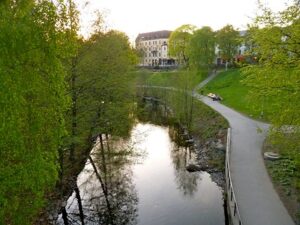
I spent the rest of the late afternoon just wandering around the city. The weather was still nice and warm. I considered my options for dinner. The outdoor beer garden had food. Their hamburger was $25 U.S. and French onion soup was twenty dollars! I wasn’t looking forward to spending that kind of money.
I like my groceries (an original quote from my brother Mark).
My hotel is located in a good spot for strolling along the river. Nearby are also several outdoor eateries. I headed that way to see what supper would bring. That was when I came across a “Remi” supermarket. Why not buy some food there and take it back to my room? That sounded like a good idea.
With that in mind, I bought a deli-like serving of spaghetti carbonara, two donuts, two oranges and two bananas. The entire bill was only $13 U.S. Maybe grocery stores, which probably cater to locals the most, are where the better (much better) food bargains can be had.
With that, I retired for the evening. Tomorrow will be a big day. I hope to see racing in my 50th different country. Then I’ll head off into the Norwegian countryside to celebrate my achievement.
The People
Everyone was helpful and nice in Oslo.
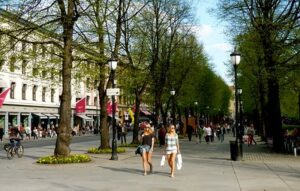
Everywhere I went folks were willing to speak English. Everyone I met was friendly and helpful. That is really the case wherever I travel. I think people are generally just nice. If they see a traveler who needs some assistance they will help if asked.
Mind you I am not traveling at night in the worst of areas when I visit these faraway places. I suspect that the reaction I receive might be somewhat different if my sample were more diverse.
to be continued……..
Thanks for reading about my trackchasing,
Randy Lewis
World’s #1 Trackchaser
Norwegian sayings: When the glacier sees the spring sun, it weeps.
“CAN THIS BE COUNTRY #50 SO SOON?” TRACKCHASING TOUR – THE RACING
Greetings from Oslo, Norway.
TODAY’S HEADLINES
It pays to have a clear objective and a workable strategy…………..details in “The objective and the strategy”.
Today was a BIG day…………….more in “Day 12 – Saturday”.
Would you sleep in the airport? …………..details in “Day 13 – Sunday”.
THE COUNTRY LIST
#50!!
RLR – Randy Lewis Racing Lifetime Trackchasing Countries
# 1 – UNITED STATES OF AMERICA – Peoria Speedway (Mt. Hawley, oval) – Track #1, Peoria, Illinois – circa 1954 (age 5)
# 2 – CANADA – Cayuga Speedway (oval) – Track #174, Nelles Corner, Ontario, Canada – July 31, 1988 (Dick Trickle winner)
# 3 – AUSTRALIA – Parramatta City Raceway (oval) – Track #180, Granville, New South Wales, Australia – November 17, 1989 (accompanied by Carol)
# 4 – UNITED KINGDOM – Northhampton International Raceway (oval) – Track #378, Northhampton – June 26, 1999 (accompanied by Carol, Kristy, Jim)
# 5 – NETHERLANDS – Driesum Racetrack (oval) – Track #839, Driesum – May 5, 2005 (accompanied by Roland Vanden Eynde)
# 6 – BELGIUM – Bellekouter oval (oval) – Track #841, Affligem – May 8, 2005 (accompanied by Roland Vanden Eynde)
# 7 – FRANCE – Circuit de Croix en Ternois (road course) – Track #843, Saint-Pol sur-Ternoise – May 8, 2005 (accompanied by Roland Vanden Eynde – 2nd new country in one day!)
# 8 – GERMANY – Nurburgring (road course) – Track #844, Nurburg – May 13, 2005 (accompanied by Carol, Roland Vanden Eynde)
# 9 – NEW ZEALAND – Western Springs Speedway (oval) – Track #1,134, Western Springs – December 26, 2006 (accompanied by Carol)
# 10 – MEXICO – Triovalo Bernardo Obregon (oval) – Track #1,281, Tiajamulco de Zuniga, Jalisco – October 14, 2007 (accompanied by Carol, J.J., Roger Ward)
# 11 – BARBADOS – Bushy Park Racing Circuit (road course) – Track #1,296, Bushy Park – December 9, 2007
# 12 – THAILAND – Bira Circuit (road course) – Track #1,300, Pattaya – January 19, 2008
# 13 – SOUTH AFRICA – Durban Grand Prix (road course) – Track #1,315, Durban, KwaZulu-Natal – February 24, 2008 (accompanied by J.J. and Will Van Horne)
# 14 – JAMAICA – Dover Raceway (road course) – Track #1,322, Brown’s Town St. Ann – March 24, 2008
# 15 – SWEDEN – Sturup Raceway (road course) – Track #1,335, Malmo – May 10, 2008 (accompanied by Carol)
# 16 – DENMARK – Ring Djursland (road course) – Track #1,336, Tirstrup – May 11, 2008 (accompanied by Carol)
# 17 – CZECH REPUBLIC – Automotodrome BRNO (road course) – Track #1,381, Brno – September 13, 2008
# 18 – AUSTRIA – Lambrechten Stock Car Track (road course) – Track #1,382, Lambrechten – September 14, 2008
# 19 – IRELAND – Tipperary International Raceway (oval) – Track #1,388, Rosegreen – October 26, 2008 (Carol and I visited this track earlier in the year)
# 20 – GUYANA – South Dakota Circuit (road course) – Track #1,390, Timehri – November 2, 2008 (accompanied by Carol)
# 21 – CHINA – The Guia Circuit (road course) – Track #1,392, Macau – November 16, 2008 (accompanied by Carol)
# 22 – COSTA RICA – Autodromo La Guacima (road course) – Track #1,398, La Guacima – November 30, 2008
# 23 – ANDORRA – Grandvalira Circuit (road course) – Track #1,404, Port d’Envalira, Andorra – January 17, 2009
# 24 – ARGENTINA – Circuito Efren Chemolli (oval) – Track #1,406, Buenos Aires, Argentina – January 31, 2009 (shared with Jerry Fisher)
# 25 – QATAR – Losail International Circuit (road course) – Track #1,408, Doha, Qatar – February 13, 2009
# 26 – BAHRAIN – Bahrain International Circuit (road course) – Track #1,410, Sakhir, Bahrain – February 27, 2009 (accompanied by Carol)
# 27 – UNITED ARAB EMIRATES – Dubai Autodrome (road course) – Track #1,411, Dubai, United Arab Emirates – February 28, 2009 (accompanied by Carol)
# 28 – COLOMBIA – Autodromo de Tocancipa (road course) – Track #1,415, Tocancipa, Colombia – March 22, 2009
# 29 – SPAIN – Motorland Aragon (road course) – Track #1,416, Alcaniz, Spain – March 28, 2009
# 30 – PORTUGAL – Circuto de Murca (road course) – Track #1,417, Murca, Portugal – March 29, 2009
# 31 – ICELAND – Kapelluhraum (road course) – Track #1,420, Hafnafjorour, Iceland – April 25, 2009 (shared with Will White)
# 32 – HUNGARY – Hungaroring (road course) – Track #1,426, Mogyorod, Hungary – May 8, 2009 (accompanied by Carol)
# 33 – SWITZERLAND – Hock Ybrig (road course) – Track #1,427, Hoch Ybrig, Switzerland – May 9, 2009 (accompanied by Carol)
# 34 – ITALY – Vighizzolo d’Este Stock Car Track (road course) – Track #1,428, Vighizzolo d’Este, Italy – May 10, 2009 (accompanied by Carol)
# 35 – DOMINICAN REPUBLIC – Autodromo Mobil 1 (road course) – Track #1,515, Santo Domingo, Dominican Republic – December 6, 2009 (accompanied by Carol)
# 36 – MALTA – Ta’Qali Race Track (road course) – Track #1,521, Ta’Qali, Malta – February 7, 2010 (accompanied by Carol)
# 37 – FINLAND – Lake Pidisjarvi Ice Track (road course) – Track #1,524, Nivala, Finland – February 20, 2010
# 38 – JAPAN – Suzuka Circuit (road course) – Track #1,530, Suzuka, Japan – March 21, 2010
# 39 – CHILE – Autodromo de Interlomas (road course) – Track #1,531, Temuco, Chile – April 18, 2010
# 40 – MOROCCO – Circuit de Marrakesh (road course) – Track #1,535, Marrakesh, Morocco – May 1, 2010 (accompanied by Carol)
# 41 – BRAZIL – Circuit de Caruaru – Aryten Senna (road course) – Track #1,540, Caruaru, Brazil – May 16, 2010 (accompanied by Carol, Jerry Fisher and Katina Spencer)
# 42 – ESTONIA – Laitse Rally Park (road course) – Track #1,571, Laitse, Estonia – July 24, 2010 (accompanied by Carol)
# 43 – LATVIA – Bikernieki (road course) – Track #1,572, Riga, Latvia – July 25, 2010 (accompanied by Carol)
# 44 – GUATEMALA – Autodromo Pedro Cofino (road course) – Track #1,580, Alotenango, Guatemala – August 15, 2010
# 45 – EL SALVADOR – El Jabali (road course) – Track #1,582, Quezaltepeque, El Salvador – August 22, 2010 (accompanied by Carol)
# 46 – ROMANIA – Bradu (road course) – Track #1,603, Bradu, Romania, El Salvador – October 16, 2010
# 47 – BULGARIA – Closed Route – Burgas (road course) – Track #1,604, Burgas, Bulgaria – October 17, 2010 (accompanied by Lyubomir and Plamen Simeonov)
# 48 – SOUTH KOREA – Korea International Circuit (road course) – Track #1,605, Yeongam, Jeollanam-Do, South Korea – October 24, 2010
# 49 – PHILIPPINES – Batangas Racing Circuit (road course) – Track #1,608, Batangas, Philippines – November 21, 2010
# 50 – NORWAY – Lyngas Motorbane (road course) – Track #1,648, Lier, Norway – April 30, 2011
The ‘International Big 5’ standings.
During the last 43 months, I have added 41 trackchasing countries to my list. That’s an average of nearly one new country every month for going on four years.
- Randy Lewis, San Clemente, California USA – 50
- Roland Vanden Eynde, Vilvoorde, Belgium – 47
- Will White, Quakertown, Pennsylvania USA – 25
- Carol Lewis, San Clemente, California USA – 24
- Chris Economaki, Charlotte, North Carolina USA – 20
I surpassed even my own expectations this year.
Obviously, I’ve been doing a good bit of international trackchasing over the past couple of years. Norway is my first “new country” for trackchasing in 2011. My country trackchasing total now stands at 50. I’ve identified about 20 more countries where I could trackchase. Some are more off the beaten path than others. Heck, some of the places I’ve already been are way off the beaten path! I figure I’ve got another good two years of international trackchasing before I slow down in that important trackchasing category.
THE OBJECTIVE, THE TRIP, THE PEOPLE…AND A WHOLE LOT MORE
The Objective and the Strategy
The objective.
It’s important to have a clear objective.
The objective was clear. First, I wanted to see auto racing in another country, which would be my 50th. Nearly as important I wanted to tour a country, Norway, that’s a long way from home. I would have four days. I couldn’t see it all but four days would allow me to see quite a bit.
The strategy.
The plan was working perfectly.
Travel strategy was important for my visit to Norway. It takes a lot of time and money to make these trips. Last week Carol and I were in the United Kingdom for eight days. That was a very productive trip for both seeing races and touring Wales and England.
Traveling from the U.K. to Norway is much easier and less expensive than traveling to Norway from the United States. Yes, I was “killing two birds with one stone” on this one.
The U.K. is eight hours ahead of our time zone in California. Norway is nine hours ahead. After being in the U.K. I was fully acclimated to enjoy Norway without being jetlagged.
Much of the time flights from one European location to another are very inexpensive. Flying into and out of Oslo from first London and then Amsterdam costs only about $100 each way. Most things in Europe are much more expensive in the U.S. However, inter-Europe airfares seem to be dramatically less expensive than what the U.S. has to offer.
Finally, it is was just 726 air miles from London to Oslo. That’s about the distance from St. Louis, Missouri to Charlotte, North Carolina. Strategy plays a pretty big part in my trackchasing. Wouldn’t you want to make all of these trips as easily and inexpensively, while not sacrificing the quality of the experience, as you could?
The Trip
Saturday
Today is the big day!
Yes, today is the BIG day. I’ve been in Europe for twelve days. Our trip to the U.K. produced eight new tracks over the Easter Bank Holiday. Extending my U.K. trip to include today’s new trackchasing country, Norway, was a great logistical move. It saved me an extra airfare. Just as importantly, it saves having to get use to a nine-hour time change a second time.
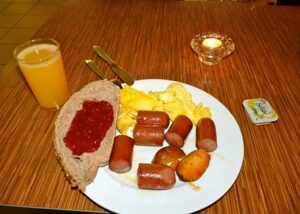
This morning I checked out of the Anker Hotel (Anker Hotel) in Oslo. I came up with this hotel by searching travel sites on the internet. The hotel delivered on three things. First, for Oslo, the price was very competitive. Secondly, my room and the hotel’s location surpassed my expectations. Finally, the included breakfast helped me combat astronomical food prices in Oslo.
Editor’s note: Let’s be honest here. I have some financial means or I wouldn’t be able to make all these trips. However, I am not “The Bill Gates of trackchasing” as some members of the “Dreaded East Coast Trackchasers” would have you believe. I grew up without much money. Despite whatever I have today, I don’t want to waste it on things that are not a “good value for money”. That makes some sense doesn’t it?
I love ‘traveling firsts’.
There was one unusual aspect to this hotel. I have stayed overnight in hotels for more than 4,000 nights in my life. What happened with the room’s door lock was a first. You have all used the new electronic “plastic keys” at hotels. The Anker Hotel uses those types of keys.
As per normal, I needed to use the key to open the lock and enter the room. However, I also had to lock the room with my plastic key. The process upon leaving the room was the same as entering. I simply needed to put the card in the lock and remove it. That locked the door. However, if I just left the room and shut the door (like I have in my previous 3,999 hotel stays) the door did not lock. I couldn’t just shut the door and have the door lock work. I didn’t discover this little gem until day #2 of my stay. If Europe can figure out how to do things differently than we do in the U.S. they will!
I don’t normally rent cars this way.
After checkout and breakfast, I had an important objective. I had to get my rental car. I was in Oslo for four days. However, I would have my rental car for just two days. I did it this way for two reasons. First, I didn’t need a car for the first two days and downtown parking is expensive. The Anker Hotel charges $35 U.S. per day to park.
Secondly, rental cars are so expensive in Norway that I planned my trip around having a car for just two days. That would be plenty of time to get to the racetrack on Saturday and explore the Norwegian countryside on Sunday.
I reserved a car with www.sidestep.com (now www.kayak.com). It would be a National Rental Car. National was doing business as “Eurocar” in Oslo. Recall, yesterday I renegotiated the price of my car. That move saved $80 U.S.
Just another way to explore Norway.
This morning I needed to move me and all of my luggage about a mile and a half from the hotel to get my car. I could have walked it. I could have taken a taxi. Walking would have been rough on the wheels of my rolling luggage. Those wheels are precious in the world of trackchasing.

I decided to use the “Oslo tramway” (Oslo Tram Service) in Oslo. I had not been on the tram yet. The tram runs on six different lines in the city. I learned from the hotel desk clerk that it costs more to buy a tram ticket from the driver than to buy the ticket in advance. A ticket, good for one hour, from the driver, costs 40 NOK (about $7.60 U.S.). Recall I paid about $13 U.S. to ride the subway system and bus system in London all day. Buying a tram ticket in advance cost 27 NOK (about $5.15 U.S.). I ducked into a convenience store, bought my ticket and I was off.
This would not be one of my best rental cars.

My rental car today will be a 5-speed VW Polo TDI (VW Polo TDI). This car was not nearly as nice to drive as the Hyundai I3 (Hyundai I3) we rented in London. I didn’t stall the Hyundai once in more than 1,000 miles of U.K. driving. I stalled the Pollo about ten times in the first few hours I had it!
It was less than a 30-mile drive to the Lyngas Motorbane racetrack in the town of Lier. My Norwegian contact, Frank Markussen had provided longitude/latitude coordinates to the track for me in advance. That data was added to my GPS. Data inputted in this manner usually gets me within 500 yards of the place I’m looking for. For racetracks, I expect to see signs by then. That was exactly what happened today.
RACE REVIEW

LYNGAS MOTORBANE – LIER, NORWAY
A wonderful day to see racing in my 50th country.
Today would be a wonderful day for bilcross racing in Lier, Norway. The weather was sunny and clear with a temperature of about 70 degrees. Today’s track was only about 20 miles from Oslo where I woke up this morning. Garth, my friendly GPS buddy, was more than willing to take me to the track’s doorstep.
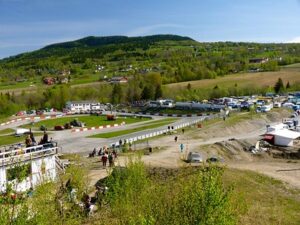
That “doorstep” was most unusual. The Lyngas Motorbane is located in an active gravel pit! You won’t want to miss the pictures and one of my best videos yet. I love the soundtrack.
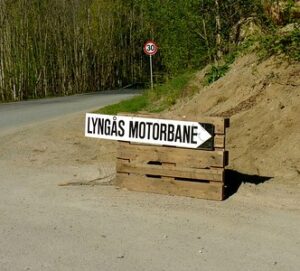
Admission was 50 kroner for me and 50 for my car. That gave me permission to park in a gravel pit! I didn’t care. Today I was seeing racing in my 50th different country. Who could have predicted that?
What the heck is ‘bilcross’?
Europe features lots of rallycross and autocross racing. Today I would be seeing “bilcross” racing. I had never heard of that before. I had to ask Frank Markussen what “bilcross” racing actually was. Here was his definition:
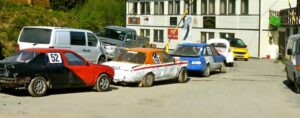
“Bilcross” is the cheap version (in Sweden it is called “Folkrace” – “race for the people”). There are limits to how much you are allowed to tune the car. After the race, the car can be sold to anyone and the bidding prices are always 8000 NOK (approximately $1500 U.S.). This is to try to keep the level low, so anyone has a chance to enter.
In the southern part of Norway, it seems as it is more common to tune the cars harder and use more money on the cars in “Bilcross” than in the northern part, so the difference between “Bilcross” and “Rallycross” are smaller there.
“Rallycross” is the more professional class, the cars cost from approximately 19 000 U.S. and up (I have heard about cars here in the northern part that cost 65 000 U.S.). These cars are not for bidding at the end of the race weekend.
“Bilcross” is also split into Junior (16 to 18 years of age), Lady’s and Open class.
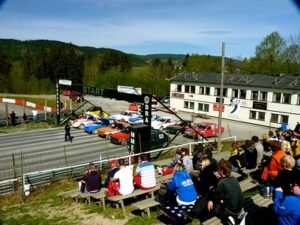
Usually (at least in the northern part) both classes drive during the weekend. From the start list I can see that both classes will drive that weekend (188 races; 2 are driving training, the age below 16, 28 in “Rallycross class 1 (engine below 2400cc), 9 in Rallycross class 2 (engine above 2400cc), the rest is in the 3 different “Bilcross”-classes.
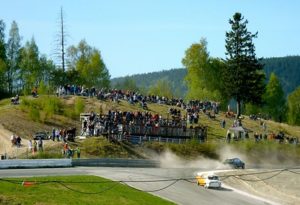
The racecourse today was a “mixed” surface one. Most of the track had an asphalt surface. Less than half of the track was covered in gravel. I guess they do that so racers have more of a challenge. The gravel section of the track created a minor dust problem and had to be watered a few times.
There was room to roam.
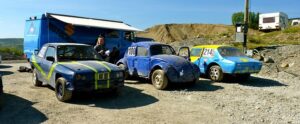
My admission ticket allowed me to roam all over the paddock. That let me gets lots of good close-up pictures of the competitors and the track ambiance. All of the P.A. communications were in Norwegian. Since that doesn’t translate well with English I had no idea what was being broadcast.
Bilcross racing is similar to the rallycross and autocross races I have seen. They start very few cars (4-5) and have short races (today, three laps each). Today I was seeing races on a road course. By definition, a road course track requires drivers to turn both left and right. The course also had some significant elevation changes and tight turns.
There was no shortage of racing.
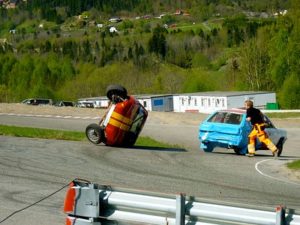
The group was racing today which was Saturday, and Sunday. I’m guessing Frank’s estimate of “188 races” covers both days. The track did a good job of having the cars in the next race ready to go. Each three-lap race took less than three minutes. I must have seen 40-50 races.
There were several flips on the track. When that happened they didn’t stop the race. The remaining drivers just steered around the cars that were sitting on their tops. That kept the program moving.
Consuming the exotic.
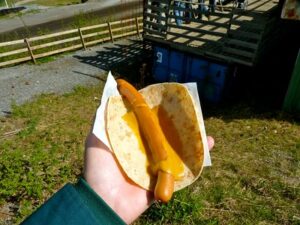
The concession stand was interesting. I ordered a hot dog. I was served what looked like a county fair foot-long wiener (very thin) on a wheat tortilla. I slathered some unusual looking mustard on it and chowed down.
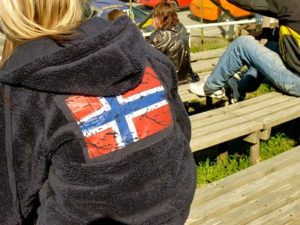
There was a good-sized crowd on hand. Some sat in bleachers at this permanent track. Others brought chairs and sat on nearby hillsides. The track sits in the midst of rolling farmland. The background was one of the most colorful and beautiful I have ever seen.
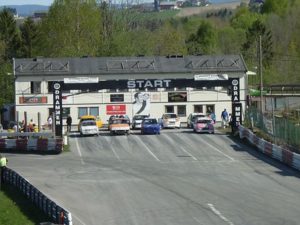
After I had been at the track for several hours, I had seen all that I needed to see. I took a million pictures and lots of videos. Don’t miss then if you want a complete understanding of the Norway bilcross racing scene.
This one was special.
As I look back on it I think I was most excited and proud to see my 500thtrack. That happened in Delevan, New York. I wanted to shout with glee. I felt the same way about seeing racing in my 50th country!
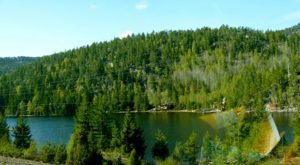
Now was time to ‘follow the wind’.
After the races, my plan was to tour the Norwegian countryside. I had gone to the Oslo Tourist Information office for some touring ideas. I had late Saturday afternoon and all day Sunday for my travels. This didn’t allow enough time to tour the fiords of West Norway. They were just too far away.
Several Norwegians told me that the area I would be seeing was the least interesting scenery wise. That may be true, but I was impressed with what I was able to see. There were lots of clear blue lakes and forests. Don’t miss the pictures!
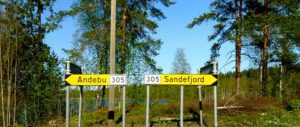
I focused mainly on the county of Telemark (Telemark) and the seaside town of Sandefjord (Sandefjord). I would overnight in Sandefjord, which until the 1950s was an active whaling village. I was hoping that Norwegian countryside accommodations would be more reasonably priced than Oslo. Given such a good weather weekend and the waterfront location that was not the case.
Come on, Garth.
The first hotel I came upon (recommended by Garth, my friendly GPS buddy) was more than $200 for the night. I didn’t want to pay that. I went to the next hotel on his list. They wanted $168 U.S. to stay. I’m by myself at this stage. I don’t need to be spending that kind of money.
This is what ‘makes the experience’.
Next on Garth’s list was a “B&B”. As expected this home was in a residential neighborhood. I knocked on the door. I heard the dog barking. After a minute or two, a man answered the door. “Is this a bed and breakfast?” I asked. “It used to be, but not anymore. Try down the street. They have a B&B,” the resident explained.
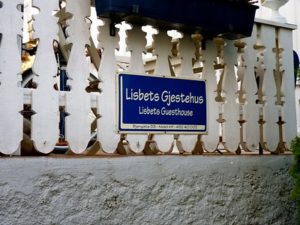
I did as told. I came upon “Lisbets Gjestehus” (Lisbets Gjestehus) and soon had a room for the night. First, I met “Lisbet”. She was a petite Norwegian woman about my age. Lisbet explained that she had a room. Would I like to see it? By the way, the Lisbet Gjestehus HAS only one room.

The room was small. I mean small! It had twin bunk beds. The sleeping area was about seven feet by eight feet! However, it was nicely appointed with a small flat-screen TV. It also had a fridge and was within walking distance of the harbor. Perfect. At 350 NOK (about $68 U.S.) it fit my budget too. Don’t miss the link above to Lisbets. It’s fun to see and read about others who had the same experience I did.
Now it was time to enjoy the experience.
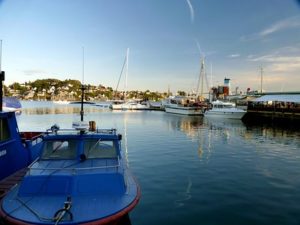
I strolled down toward the harbor. There was a lot to see with all of the boats and old seacoast buildings. It was getting cool in the early evening. The forecast calls for rain tomorrow and colder temperatures. I found a nice waterfront restaurant. However, a pizza and two Coke Zeros (at about $40 U.S.) were all that I wanted to afford. With that, I returned to my cubicle and began to develop my Sunday plan.
Sunday
More trackchasing or touring?
I had the option of driving some 423 kilometers (about 250 miles) today to see another racetrack or to spend the day touring the countryside. I chose to tour. I had already accomplished my main goal of seeing a race in Norway. Who knows when or if I will ever get back here? I wanted to see what there was to see.
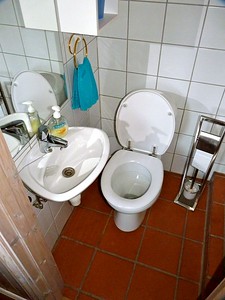
I had overnighted at a small B&B in Sandefjord. How small was it? The B&B, Lizbet’s Gjestehus, had only one room! Even that room was small. It was about the size of my college dorm room and had twin bunk beds. If Carol had been with me would she have accepted the top bunk?
To Sweden?
Sandefjord is located on the water. When I checked in last night I asked Lizbet what there was to do in town. She mentioned the ferry. I asked her where the ferry went. “To Sweden”, she exclaimed as if I should have known that. Well, of course, Sweden!
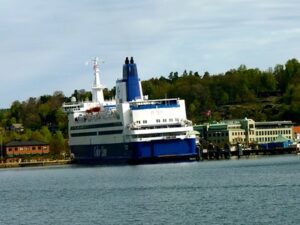
That sounded intriguing. I did some investigating and found the ferryboat went from Sandefjord to Stromstad, Sweden several times each day. The one-way travel time was 2.5 hours. I could take the 10 a.m. boat to Sweden, stay four hours and catch the 4:30 p.m. back to Sandefjord. I liked that plan but feared the cost would be out of sight. I was surprised to learn a ticket for someone my age, round-trip, was only $60 U.S. That sounded like a good deal.
However, the more I thought about it, the less excited I was about taking this boat ride. What if they canceled the return trip due to any number of reasons? That could really screw up my getting home. I also wondered what there would be to do in Stromstad for four hours. I didn’t go to Sweden. In hindsight that was a mistake!
As it was I did a power walk around the Sandefjord Harbor. I was there to watch the ferry steam off without me at 10 a.m. I went back to my “dorm room” and relaxed until my self-imposed noon checkout time. Lizbet had told me she didn’t need the room until 5 p.m. but I needed to get on the road.
It’s Norwegian or bust baby.
Along the roads and small towns of Norway, there is no English spoken or signposted. After a while, that’s a bit of a hassle. Garth can get me from point A to point B well enough. However, once I was at point B I couldn’t tell a hotel from an auto parts store when all signs were in Norwegian.
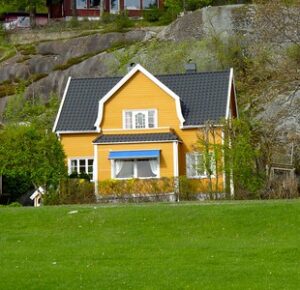
My first stop was to a seaside town in the county of Telemark. However, I ran into a problem. The main road into town offered up an automatic tollbooth. There were no people I could pay to use the toll road. That must be fine for local residents but not so much for tourists. I did not have a toll transponder. The last thing I needed was to get a letter from National Rental Car (dba Eurocar) telling me I have blown through a tollgate. They would charge me the toll and probably a service fee on top of that. I was too lazy to stop and ask anyone for a solution. I tried to go round the toll area by asking “Garth” not to use toll roads. However, the road that would have saved me was closed!
I continued to drive along the sea heading generally back toward Oslo. My next small town location looked as if the entire place was closed on Sunday. Not much to do there. I noticed that local shopping malls along E18, the main “interstate” seemed to be closed as well. Overall, this was not nearly the touring day I had hoped for.
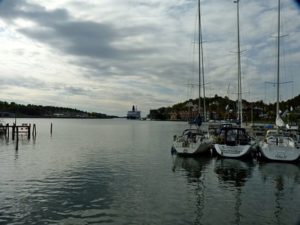
In hindsight, I wished I had taken the ferry to Sweden. I watched it sail out of sight. Failing that I could have gone to another Norwegian race. I don’t “strike out” that often with my “just drive and see what you can see” approach. Nevertheless, the scenery was pretty during the springtime in Norway.
Time to pay the piper.
Near the airport, it was time to get fuel. My rental car is diesel-powered. In Norway, as opposed to the U.K. and the U.S.A. diesel fuel is less expensive than gasoline.
When I fueled up I had driven about 400 kilometers. I needed 289.81 NOK or about $55 U.S. for fuel. Diesel fuel was 12.65 NOK per liter. I used 22.91 liters or 6.1 U.S. gallons. I had driven 250 miles at that point. That meant my little VW Pollo TDI gave me 41 M.P.G. That helped offset the $9.19 U.S. per gallon cost of fuel!
For research purposes only.
Just before I reached the airport I stopped at McDonald’s. I did this for “research purposes” only. I know that folks can easily relate to an American product like Mickey D’s. I wanted to compare the taste and quality of a McDonald’s product to what we have at home. I purchased one filet o’ fish sandwich. A friendly hard-working crew served the sandwich. It did take nearly five minutes to get it though. The taste was identical to what I would have been served in the U.S.A. That’s what makes McDonald’s, McDonald’s. The cost was 30 NOK (about $6 U.S.). That’s probably 1.5-2 times the charge in the U.S.
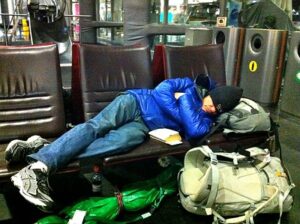
Sleeping in airports…..is one way to do it.
From there it was on to the airport to return my rental car. That process went smoothly. Although I had done research at www.sleepinginairports.com I asked the rental car agent where the best place to sleep in the airport was. He misunderstood my question. He began to tell me which hotels were located nearby. No, I told him I wanted to know where was best to sleep in the airport. He still didn’t get my point and told me about the two hotels right outside the terminal. Finally, I smiled and said, “No, I’m talking about IN the airport”. Now he understood. He threw up his hands, smiled and said, “I’m not sure!”
Monday
Today was going to be a long day.
Yes, today is going to be a LONG day. Actually, it was somewhat of a long night. Yes, I slept overnight in the Oslo airport. It could have been worse. Everything I read at www.sleepinginairports.com was right on except for one thing.
Those folks made it sound as if it would be difficult to find a place to lie down and sleep. I got there early…..at 8 p.m. The arrivals area is level one, the departures location is level two. I went up to level two where I could get a great view of everything on level one. This helped me quickly see what area might be best to “camp out” in.

I staked out three padded seats on level one that I could spread out across. Others were doing the same thing I was planning to do! I used my security cable to secure all of my stuff to the row of seats. I was strategically located near a bathroom, albeit one normally reserved for disabled persons.
The Oslo airport is a “quiet” airport. They don’t have all of those annoying announcements minute by minute that most U.S. airports have. The only announcement came about once an hour reminding passengers to keep an eye on their stuff. Outside temperatures dipped into the 40s overnight. During my last hour of sleep, it did get a little chilly but nothing very serious.
This helped my hotel budget.
This was also beneficial to my Oslo hotel budget. Remember when you used to get a zero on a pop quiz in school? Me neither. However, a “zero” helps out the old “average” when you’re going for a low score as in budgeting.
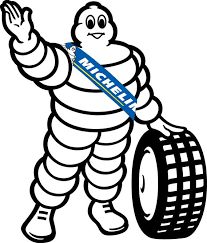
Sixteen hours of flying with the Michelin Man.
My first (of three) flights would depart for Amsterdam at 8:30 a.m. I was using SAS Airlines. They only allow one carryon bag. This forces me to “skirt” the system. First, I pack my one and only carryon bag to the gills. Then I pack my golf windbreaker’s sleeves full of dirty laundry. It sort of looks as if I’m carrying the “Michelin Man” under my arms but it works.
I used the SAS kiosk to get my boarding pass. The fewer people I have to come in contact to avoid further “carryon bag” scrutiny the better. European airport security is not as complete as what we have in the U.S. Passengers do not have to take off their shoes or remove liquids from their bags. Remember, I told you if they can do it differently in Europe from what the U.S. does they will! Sometimes that means “better” and sometimes not.
I landed in Amsterdam without incident. That’s the best way. I had a three-hour layover before I would head to Minneapolis. None of my primary sponsors fly directly from either Oslo or Amsterdam to Los Angeles. Would you believe there are three daily flights from Amsterdam to Minneapolis on just one airline? That seems like a lot to me.
No souvenirs from this trip.
I wanted to buy some souvenirs. However, my limited rolling carryon bag was jammed with seven days worth of clothing and enough technology to launch the space shuttle. No presents from this trip.

The Amsterdam airport has some incredible shopping opportunities though. It’s one of my favorite airports. I chose to connect through Amsterdam rather than London for one reason. London has a tax of about $150 on departures. Amsterdam doesn’t have much of a tax at all. With all the traveling I do as well as being a “retired pensioner living on a small fixed income or something like that” it pays to make the right daily financial decisions. You never know when you’re going to need another one hundred and fifty dollars. Again this is an example of “buying good things cheap”.
I must confess that I flew in business class back from Amsterdam to Minneapolis. I got a chance to try my sponsor’s new “perfectly flat” lay down seats. Yes, it’s like a bed.
Yes, these were some extreme outcomes.
You might say I go to some extremes in life. Last night I slept overnight on three chairs in the Oslo airport. Today I fly business class for a 4,000-plus mile flight. I will tell you this. I realize how perfectly lucky I am to have this “sponsorship” deal. In reality, it’s a real-life example of “giving, then getting back”. I didn’t give in the first place to get back, it just worked out that way.
The People
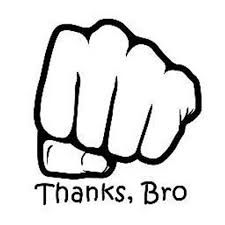
I have people to thank.
Again, I have to thank Frank Markussen. He was my main Norwegian contact throughout the pre-planning phase of this trip. We started talking all the way back in December. Could I have done this trip without any help. Of course, I could have. Would it have been as good? No way!
Thanks, Frank. Also, thanks to my buddies at TripAdvisor.com. It always pays to get a little help from your friends. However, I don’t want TOO much help. That takes the fun and challenge out of the trip.
What I’m really looking for when I seek advice from my foreign scouts is a good understanding of the options. Once I better understand the options then I can make my own choices on which way the trip goes.
COUNTRY COMPARISONS
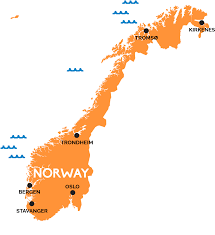
Norway
This was my first ever track to see in Norway. It was my first ever time to visit the country. Somewhat incredibly only two trackchasers have ever come to Norway to pursue their hobby. Roland Vanden Eynde came here in 2001 and Will White in 2005. Neither of those visits included the track I was seeing today.
Coming Soon – RLR – Randy Lewis Racing Exclusive Features!
My review of the Apple iPhone trackchasing “app” Track Guide powered by the National Speedway Directory.
How is the transition going from unofficial trackchasing commissioner Will White to his successor?
There’s a big battle brewing for the second-place ranking in the worldwide trackchaser standings. You won’t want to miss my analysis of this contest.
Thanks for reading about my trackchasing,
Randy Lewis
World’s #1 Trackchaser
Norwegian sayings: Age changes the hair, but not always the mind. Alder endrar håra, men ikkje alltid hugen.

TRAVEL DETAILS
AIRPLANE
Santa Ana, CA (SNA) – Chicago, IL (ORD) – 1,720 miles
Chicago, IL (ORD) – London, England (LHR) – 3,940 miles
RENTAL CAR #1
London’s Heathrow Airport – trip begins
Anglesey, Wales – 306 miles
Hereford, U.K. – 475 miles
Castle Donington, U.K. – 573 miles
Purfleet, U.K. – 720 miles
Horndean, U.K. – 817 miles
Aldermasten, U.K. – 881 miles
Wooten, U.K. – 1,024 miles
Dover, U.K. – 1,037 miles
London’s Heathrow Airport – 1,162 miles – trip ends
AIRPLANE
London, England (LHR) – Oslo, Norway (OSL) – 726 miles
RENTAL CAR #2
Gardermoen International Airport – trip begins
Lier, Norway – 24 miles
Gardermoen International Airport – 291 miles trip ends
AIRPLANE
Oslo, Norway (OSL) – Amsterdam, Netherlands (AMS) – 572 miles
Amsterdam, Netherlands (AMS) – Minneapolis, MN (MSP) – 4,150 miles
Minneapolis, MN (MSP) – Santa Ana, CA – 1,520 miles
Total Air miles – 12,628 (6 flights)
Total Rental Car miles – 1,453 (2 cars)
Total miles traveled on this trip – 14,081 miles
TRACK ADMISSION PRICES:
Anglesey Circuit – Complimentary admission
Lugg View Raceway – 5BP
Donington Park – no charge
Arena Essex Raceway – 7BP
Horndean Raceway – 5BP (BP senior savings)
Aldermasten Raceway – no charge
Lydden Hill Race Circuit – 20BP
Dover Raceway – 9BP
Lyngas Motorbane – 50 NOK (plus 50 NOR parking)
Total racetrack admissions for the trip – 46BP + 50 NOK (about $85 U.S.)
COMPARISONS
LIFETIME TRACKCHASER COMPARISONS
There are no trackchasers currently within 200 tracks of my lifetime total.
- Randy Lewis, San Clemente, California – 1,648
- Ed Esser, Madison, Wisconsin – 1,363
- Guy “The Kid” Smith, Effort, Pennsylvania – 1,360
Official end of the RLR – Randy Lewis Racing Trackchaser Report
LIKE TO KNOW MORE ABOUT NORWAY – TRACKCHASING COUNTRY #50?

NORWAY – FAST FACTS*
NORWAY!
It’s location.
Norway, officially the Kingdom of Norway, is a Nordic country in Northern Europe occupying the western portion of the Scandinavian Peninsula. Norway has a total population of about 4.9 million. It is the second least densely populated country in Europe. The majority of the country shares a border to the east with Sweden; its northernmost region is bordered by Finland to the south and Russia to the east; in its south Norway borders the Skagerrak Strait, across which Denmark is situated. The capital city of Norway is Oslo.
Norway is a unitary parliamentary democracy and constitutional monarchy, with King Harald V as its head of state and Jens Stoltenberg as its prime minister. Although having rejected European Union membership in two referenda, Norway maintains close ties with the union and its member countries, as well as with the United States. Norway remains one of the biggest financial contributors to the United Nations, and participates with UN forces in international missions, notably in Afghanistan, Kosovo, Sudanand Libya.
Norway has extensive reserves of petroleum, natural gas, minerals, forests,seafood, fresh water, and hydropower. It is the world’s largest producer of oiland natural gas per capita outside of the Middle East, and the petroleum industry accounts for around a quarter of the Gross domestic product. The country maintains a Scandinavian welfare model with universal health-care, subsidized higher education, and a comprehensive social security system. From 2001 to 2007, and then again in 2009 and 2010, Norway had the highest human development in the world.
Union with Denmark.
After Sweden broke out of the Kalmar Union in 1521, Norway remained with Denmark until 1814, a total of 436 years. During the national romanticism of the 19th century, some referred to this period as the “400-Year Night”, since all of the kingdom’s royal, intellectual, and administrative power was centred in Copenhagen in Denmark.
Union with Sweden.
After Denmark–Norway was attacked by the United Kingdom at the Battle of Copenhagen, it entered into an alliance with Napoleon, with the war leading to dire conditions and mass starvation in 1812. As the Danish kingdom found itself on the losing side in 1814, it was forced, under terms of the Treaty of Kiel, to cede Norway to the king of Sweden, while the old Norwegian provinces of Iceland, Greenland and the Faroe Islands remained with the Danish crown. Norway took this opportunity to declare independence, adopted a constitution based on American and Frenchmodels, and elected the crown prince of Denmark-Norway Christian Frederik as king on 17 May 1814.
Independence.
Christian Michelsen, a shipping magnate and statesman, Prime Minister of Norway from 1905 to 1907, played a central role in the peaceful separation of Norway from Sweden on 7 June 1905. After a national referendum confirmed the people’s preference for a monarchy over a republic, the Norwegian government offered the throne of Norway to the Danish Prince Carl, and Parliament unanimously elected him king, the first king of a fully independent Norway in 586 years. He took the name of Haakon VII, after the mediaeval kings of independent Norway.
World War I and II.
During World War I, Norway was a neutral country. In reality, however, Norway had been pressured by the United Kingdom to hand over increasingly large parts of its massive merchant fleet to the UK at low rates, as well as to join the trade blockade against Germany. Norwegian merchant marine ships with Norwegian sailors were then required to sail under the British flag and risk being sunk by German submarines. Thus, many Norwegian sailors and ships were lost. Thereafter, the world ranking of the Norwegian merchant marine fell from fourth place in the world to sixth place in the world.
Norway also proclaimed its neutrality during World War II, but Norway was invaded by German forces on 9 April 1940. Norway was unprepared for the German surprise attack, so military and naval resistance only lasted for two months. The armed forces in the north launched an offensive against the German forces in the Battles of Narvik, until they were forced to surrender on June 10 after losing British help following the Fall of France.
Geography.
Norway comprises the western part of Scandinavia in Northern Europe. The rugged coastline, broken by huge fjords and thousands of islands, stretches 25,000 kilometres (16,000 mi) and 83,000 kilometres (52,000 mi) including fjords and islands. Norway shares a 1,619-kilometre (1,006 mi) land border with Sweden, 727 kilometres (452 mi) with Finlandand 196 kilometres (122 mi) with Russia at the east. To the north, west and south, Norway is bordered by the Barents Sea, the Norwegian Sea, the North Sea and Skagerrak.
Climate.
The southern and western parts of Norway experience more precipitation and have milder winters than the southeastern part. The lowlands around Oslo have the warmest and sunniest summers but also cold weather and snow in wintertime (especially inland).
Because of Norway’s high latitude, there are large seasonal variations in daylight. From late May to late July, the sun never completely descends beneath the horizon in areas north of the Arctic Circle (hence Norway’s description as the “Land of the Midnight Sun”), and the rest of the country experiences up to 20 hours of daylight per day. Conversely, from late November to late January, the sun never rises above the horizon in the north, and daylight hours are very short in the rest of the country.
Economy.
Norwegians enjoy the second highest GDP per-capita (after Luxembourg) and fourth highest GDP (PPP) per-capita in the world. Today, Norway ranks as the second wealthiest country in the world in monetary value, with the largest capital reserve per capita of any nation.
Norway maintained first place in the world in the UNDP Human Development Index (HDI) for six consecutive years (2001–2006), and then reclaimed this position in 2009 and 2010. Cost of living is about 30% higher in Norway than in the United States and 50% higher than the United Kingdom. The standard of living in Norway is among the highest in the world. Foreign Policy Magazine ranks Norway last in its Failed States Index for 2009, judging Norway to be the world’s most well-functioning and stable country. Continued oil and gas exports coupled with a healthy economy and substantial accumulated wealth lead to a conclusion that Norway will remain among the richest countries in the world in the foreseeable future.
Resources.
Export revenues from oil and gas have risen to 45% of total exports and constitute more than 20% of the GDP. Norway is the fifth largest oil exporter and third largest gas exporter in the world, but it is not a member of OPEC. To reduce over-heating in economy from oil revenues and minimize uncertainty from volatility in oil price, and to provide a cushion for the effect of aging of the population, the Norwegian government in 1995 established the sovereign wealth fund (“Government Pension Fund — Global”), which would be funded with oil revenues, including taxes, dividends, sales revenues and licensing fees.
Demographics.
Norway’s population numbers roughly 4.9 million. Most of the population is Norwegians, a North Germanic people.
The Sami people traditionally inhabit central and northern parts of Norway and Sweden, as well as in northern Finland and in Russia on the Kola Peninsula. Another national minority are the Kven people who are the descendants of Finnish speaking people that moved to northern Norway in the 18th up to the 20th century. Both the Sami and the Kven were subjected to a strong assimilation policy by the Norwegian government from the 19th century up to the 1970s. Because of this “Norwegianizationprocess”, many families of Sami or Kven ancestry now self-identify as ethnic Norwegian.
Norwegians of Pakistani descent are the largest visible minority group in Norway, and most of their 31,000 members live around Oslo. The Iraqi immigrant population has shown a large increase in recent years. After the enlargement of the EU in 2004, there has also been an influx of immigrants from Central and Eastern Europe, particularly Poland. The largest increase in 2007 was of immigrants from Poland, Germany, Sweden,Lithuania and Russia.
There are almost 4.7 million Norwegian Americans according to the 2006 U.S. census. The number of Americans of Norwegian descent living in the U.S. today is roughly equal to the current population of Norway.
Immigration.
In 2011 there were approximately 883,000 people with immigrant background residing in Norway, or 17% of the total population. In 2010, the immigrant community grew by 57,000, which accounted for 90% of Norway’s population growth while 14% of the newborns were of immigrant background. The policies of immigration and integration are subjected to major controversy in Norway. These statistics indicate that Norway’s population is now 82.0% ethnic Norwegian, and falling quickly. Of the 12.2% of the population that is immigrant or children of two immigrants (which doesn’t include the 5.7% of mixed birth), other Europeans are 5.8% of the total, Asians (including Pakistanis, Iraqis, and Turks) 4.3%, Africans 1.5%, and others 0.6%.
Religion.
Norwegians are registered at baptism as members of the Church of Norway, many remain in the state church to be able to use services such as baptism, confirmation, marriage and burial, rites which have strong cultural standing in Norway.
79.2% of Norwegians were members of the state Church of Norway as of January 1, 2010, a 1% drop compared to the year before and down nearly 3% from two years earlier. However, only 20% of Norwegians say that religion occupies an important place in their life (according to a recent Gallup poll), making Norway one of the most secular countries of the world (only in Estonia, Sweden and Denmark were the percentage of people who considered religion to be important lower). In the early 1990s, it was estimated that between 4.7% – 5.3% of Norwegians attended church on a weekly basis. This low figure dropped to a mere 2% by 2008, putting Norway at the bottom of the church attendance rankings in Europe In 2010, Norway statistics reported still a further drop in church attendance during 2009. According to the Eurobarometer Poll 2005, at that time 32% of Norwegian citizens responded that “they believe there is a god”. This aligns with another study by Gustafsson and Pettersson (2002), according to which 72% of Norwegians do not believe in a ‘personal God.
Education.
Higher education in Norway is offered by a range of seven universities, five specialized colleges, 25 university colleges as well as a range of private colleges. Education follows the Bologna Process involving Bachelor (3 years), Master (2 years) and PhD (3 years) degrees. Acceptance is offered after finishing upper secondary school with general study competence.
Public education is virtually free, regardless of nationality, with an academic year with two semesters, from August to December and from January to June. The ultimate responsibility for the education lies with the Norwegian Ministry of Education and Research.
Languages.
The North Germanic Norwegian language has two official written forms, Bokmål and Nynorsk. Both of them are recognized as official languages, in that they are both used in public administration, in schools, churches, and media, but Bokmål is used by the vast majority, about 85–90%. Around 95% of the population speak Norwegian as their native language, although many speak dialects that may differ significantly from the written language. In general, most Norwegian dialects are inter-intelligible, although some may require significant efforts on the part of a listener to understand. Several Uralic Sami languages are spoken and written throughout the country, especially in the north, by the Sami people. Speakers have a right to get education in Sami language no matter where they are living and receive communication from the government in various Sami languages. The Kven minority speak the Uralic Kven language/Finnish. There is advocacy for making Norwegian Sign Languagean official Norwegian language. The main foreign language taught in Norwegian elementary school is English. The majority of the population are fluent in English, especially those born after World War II.
Sports.
Norwegians have the special advantages of abundant space and traditionally close contact with nature. Cross-country skiing and all forms of skating are national pastimes in the long winter season. Figure skater Sonja Henie is one of Norway’s most famous athletes, having captured gold medals in the 1928, 1932, and 1936 Winter Games and subsequently becoming a major international film star. Norway has hosted the Winter Games twice: at Oslo in 1952 and at Lillehammer in 1994. Norwegians have won more medals at the Winter Games than athletes from any other country.
When the green flag drops at a new country trackchasing track….that’s the biggest moment of the entire trip.
You get to experience the entire trip with this video.
More Oslo, Norway touring.
Not my video but good commentary from the Norwegian track I visited.
Check out my complete photo albums from the trip to Norway. They are only a click away….
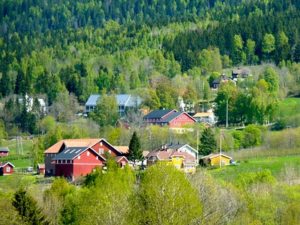
Seeing the sights all over Norway
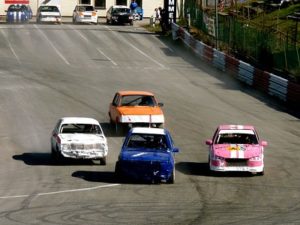
Getting to the racetrack with some touring to follow
